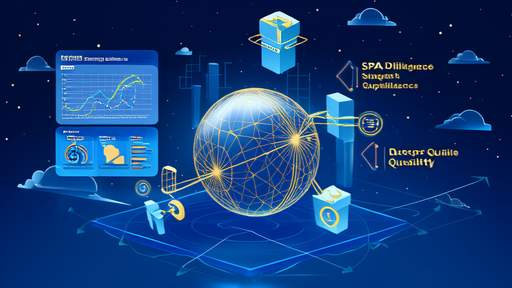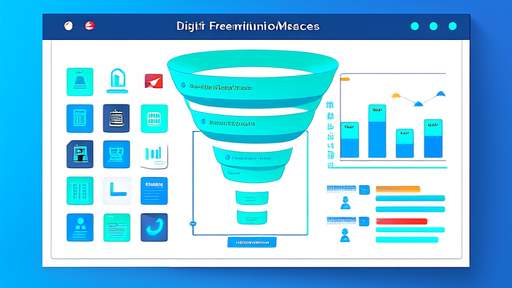The intersection of blockchain technology and supply chain finance has long been heralded as a game-changer for industries grappling with transparency and trust issues. Yet, beneath the surface of this promising synergy lies a persistent challenge: the authentication and verification of rights within decentralized ecosystems. While blockchain's immutable ledger theoretically solves many problems, its practical application in supply chain finance reveals gaps that demand urgent attention.
Ownership disputes in decentralized networks have emerged as a critical pain point. Traditional supply chains rely on centralized authorities to validate transactions and establish ownership. Blockchain disrupts this model by distributing trust across nodes, but the absence of a single arbiter complicates rights confirmation. When multiple parties claim ownership over the same asset or invoice, the decentralized nature that makes blockchain appealing suddenly becomes its Achilles' heel. Legal systems worldwide struggle to reconcile smart contract executions with conventional property laws, leaving financial institutions hesitant to fully embrace blockchain-based solutions.
The metadata problem presents another layer of complexity. Blockchain excels at recording transactional data but falters when it comes to contextual information about assets. A token representing a shipment of cobalt might verify its existence on the ledger but fail to capture whether the minerals were ethically sourced or meet quality specifications. This disconnect between on-chain verification and off-chain reality creates uncertainty that undermines the very purpose of rights authentication in supply chain finance.
Interoperability challenges between different blockchain platforms further exacerbate the rights verification dilemma. As enterprises adopt varied distributed ledger technologies, the lack of standardized protocols means authenticated rights on one chain may not be recognized by another. This fragmentation mirrors the Tower of Babel in digital form, where perfect information exists in isolation but cannot be universally understood or trusted across supply chain networks.
The temporal dimension of rights authentication introduces yet another complication. Supply chains operate across time zones and jurisdictions, with ownership transferring multiple times before final settlement. While blockchain timestamps every transaction, the legal recognition of these digital breadcrumbs varies by region. A right authenticated via smart contract in Singapore might not hold the same weight in Germany, creating regulatory limbo that stalls financial operations.
Identity verification gaps plague current implementations. Pseudonymous wallet addresses might ensure privacy but fall short of meeting Know Your Customer (KYC) and Anti-Money Laundering (AML) requirements. Financial institutions find themselves caught between blockchain's promise of anonymity and regulatory demands for transparency, resulting in hybrid solutions that often negate the technology's core benefits.
The energy sector provides a telling case study. Renewable energy certificates traded on blockchain platforms frequently encounter disputes over provenance and ownership. While the technology verifies generation and transfer, the underlying rights to claim environmental benefits often become entangled in complex legal interpretations that the code cannot resolve. This disconnect between digital certainty and real-world ambiguity stalls what should be straightforward financial transactions.
Smart contract limitations in handling contingent rights reveal another vulnerability. Supply chain finance often involves conditional payments triggered by multiple events - delivery confirmation, quality approval, customs clearance. Current smart contract architectures struggle with the "if-then-else" complexity of real-world trade, leaving gaps where rights could be contested. The deterministic nature of blockchain clashes with the nuanced reality of global commerce.
The agricultural supply chain illustrates this perfectly. A farmer's right to payment upon delivery seems straightforward until accounting for moisture content deviations, pest damage assessments, or transportation delays. These real-world variables defy simple codification, creating uncertainty about when and how rights transfer actually occurs within the blockchain framework.
Data integrity concerns at the point of origin undermine the entire authentication chain. Blockchain's famous immutability only applies to data once recorded; it cannot verify the accuracy of initial inputs. In supply chain finance, where invoices and bills of lading are digitized for blockchain recording, the potential for human error or intentional manipulation at the data entry stage persists. This creates a paradox where the most secure link in the chain depends on the least secure - human operators.
The textile industry's struggle with authenticating organic cotton certifications demonstrates this vividly. While blockchain tracks the movement of certified materials beautifully, it cannot retroactively verify whether the original certification was properly granted. This fundamental limitation forces financial institutions to maintain parallel verification systems, negating much of blockchain's efficiency promise.
Legal recognition hurdles vary dramatically across jurisdictions. Some nations have embraced blockchain-based rights authentication, while others demand paper trails. This patchwork regulatory environment forces multinational supply chains to maintain dual systems - one for blockchain-enabled partners and another for traditionalists. The resulting inefficiencies often outweigh the technology's benefits, particularly for small and medium enterprises.
The maritime shipping industry's slow adoption of blockchain bills of lading exemplifies this challenge. Despite clear efficiency gains, many ports and customs authorities still require physical documents, creating parallel processes that defeat the purpose of digitization. Until legal systems globally recognize blockchain-authenticated rights as equivalent to traditional documents, the technology's potential will remain constrained.
Looking ahead, solutions may emerge from unexpected quarters. Hybrid approaches combining blockchain with other emerging technologies like IoT and AI could address some authentication gaps. Digital identity frameworks evolving alongside decentralized networks might resolve KYC/AML conflicts. Most importantly, industry consortia are beginning to establish common standards that could finally achieve the interoperability needed for seamless rights verification across supply chains.
The path forward requires acknowledging that blockchain alone cannot solve all authentication challenges in supply chain finance. Rather than viewing it as a panacea, practitioners must approach it as one tool among many in the quest for verifiable, enforceable rights. The technology's true value lies not in isolated implementation, but in thoughtful integration with legal frameworks, business processes, and complementary technologies.
As the industry matures, the focus must shift from theoretical possibilities to practical solutions that address these authentication pain points. Only then can blockchain fulfill its promise to transform supply chain finance from a paper-based relic into a transparent, efficient digital ecosystem where rights are clearly established and universally recognized.

By /Jun 3, 2025

By /Jun 3, 2025

By /Jun 3, 2025

By /Jun 3, 2025

By /Jun 3, 2025

By /Jun 3, 2025

By /Jun 3, 2025

By /Jun 3, 2025

By /Jun 3, 2025

By /Jun 3, 2025

By /Jun 3, 2025

By /Jun 3, 2025

By /Jun 3, 2025

By /Jun 3, 2025

By /Jun 3, 2025

By /Jun 3, 2025

By /Jun 3, 2025

By /Jun 3, 2025

By /Jun 3, 2025

By /Jun 3, 2025